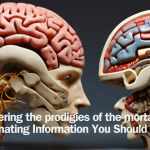First of all, Being Aware of the Brunnstrom Stages
Stroke Recovery Stages For both patients and medical professionals, the Brunnstrom Stages provide a path forward and a ray of hope in the field of stroke rehabilitation. These phases, which bear the name of the Swedish neurophysiologist Signe Brunnstrom, provide a framework for understanding and promoting motor recovery after a stroke. The various stages signify discrete phases in the process of restoring mobility and functionality, providing rehabilitation experts with a guide to efficiently customize treatments.
Table of Contents
Phase 1: Insolubility:Stroke Recovery Stages
Stage 1: Flaccidity is where the Brunnstrom Stages adventure starts. In this instance, the afflicted muscles lack tone and are thus weak and reactive. A patient’s inability to move freely or activate reflexes may be a sign of the stroke’s first shock to the neurological system. During this phase of rehabilitation, the main goals are to avoid issues like contractures and to stimulate the senses in order to stimulate dormant brain connections.
Stage 2: The onset of spasticity
Stage 2: Spasticity As the body begins to heal from the first shock appears denotes the start of uncontrollably contracted muscles. During this stage, spasticity, which is characterized by muscular tightness and stiffness, becomes apparent. Movement difficulties notwithstanding, spasticity is an important turning point in the healing process and suggests a degree of brain reconfiguration. During this phase, the goal of therapeutic interventions is to promote controlled movement patterns while managing spasticity using methods including stretching, posture, and medication.
Stage 3: An increase in spasticity
Moving forward on the rehabilitation continuum, Stage 3: Spasticity signals the beginning of more intense muscular tone and uncontrollable motions. Patients may have more severe spasticity at this period, which makes voluntary control difficult but not impossible. Utilizing the body’s innate mobility capabilities, rehabilitation techniques treat joint contractures and other difficulties associated with spasticity while promoting motor learning and coordination via exercises.
Stage 4: The Spasticity Starts to Reduce
The progressive relaxation of muscles held by spasticity is shown by the encouraging development of Stage 4: Spasticity Begins to Decrease. Enhanced voluntary control over movements may be experienced by patients, but they may still feel residual weakness and stiffness. During this phase of rehabilitation, the objective is to maximize the developing motor control by using functional activities and task-specific training that are customized to the goals and abilities of the person.
Stage 5: Additional Spasticity Decline
Stage 5: Further Decrease in Spasticity, which is characterized by a considerable decrease in spasticity, represents a crucial milestone as recovery advances. Patients become more independent in performing functional activities and have more control over their motions. In order to promote optimum recovery outcomes, rehabilitation programs increasingly focus on improving strength and endurance, honing motor skills, and encouraging participation in daily living activities.
Stage 6: The Absence of Spasticity
Stage 6: Spasticity Disappears, when the formerly persistent spasticity completely dissolves, is the pinnacle of the Brunnstrom Stages. Movement patterns return to almost normal when muscles restore their natural tone and function. Rehabilitation at this point focuses on improving motor control, regaining balance and coordination, and helping people reintegrate into their communities with more self-assurance and independence.
Read More:50 Cent Adversary of Diddy?
Final Thoughts: Accepting the Healing Process
The Brunnstrom Stages offer a ray of hope in the field of stroke rehabilitation, helping patients and medical professionals navigate the challenging road to recovery. Every step, from the first flaccidity to the final absence of spasticity, is an example of the human spirit’s ability to overcome hardship and persevere. Through comprehension and use of the Brunnstrom Stages’ guiding principles, we may enable people to recover from strokes to the fullest extent possible and resume fulfilling lives.









